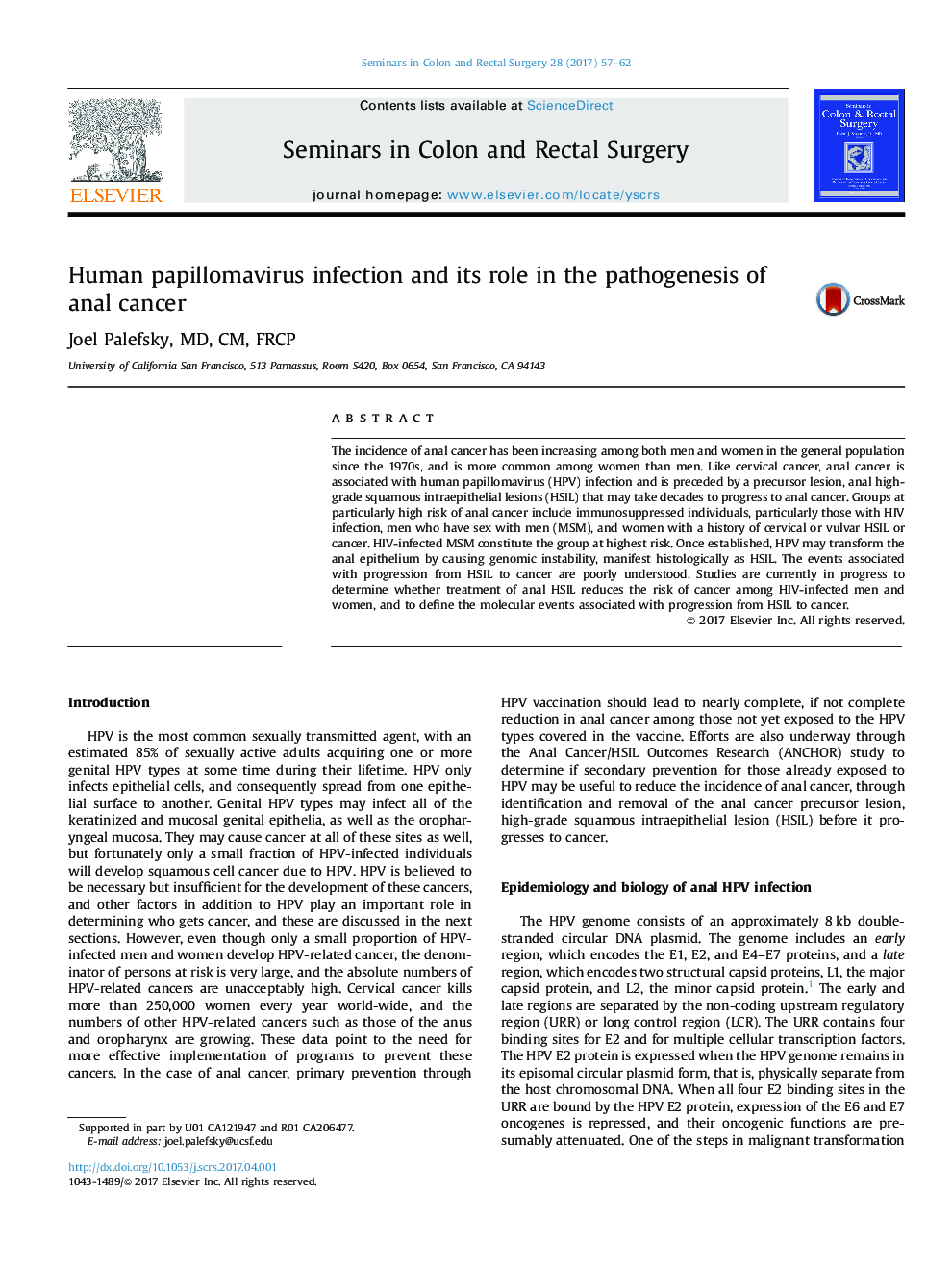| Article ID | Journal | Published Year | Pages | File Type |
|---|---|---|---|---|
| 5661542 | Seminars in Colon and Rectal Surgery | 2017 | 6 Pages |
The incidence of anal cancer has been increasing among both men and women in the general population since the 1970s, and is more common among women than men. Like cervical cancer, anal cancer is associated with human papillomavirus (HPV) infection and is preceded by a precursor lesion, anal high-grade squamous intraepithelial lesions (HSIL) that may take decades to progress to anal cancer. Groups at particularly high risk of anal cancer include immunosuppressed individuals, particularly those with HIV infection, men who have sex with men (MSM), and women with a history of cervical or vulvar HSIL or cancer. HIV-infected MSM constitute the group at highest risk. Once established, HPV may transform the anal epithelium by causing genomic instability, manifest histologically as HSIL. The events associated with progression from HSIL to cancer are poorly understood. Studies are currently in progress to determine whether treatment of anal HSIL reduces the risk of cancer among HIV-infected men and women, and to define the molecular events associated with progression from HSIL to cancer.
